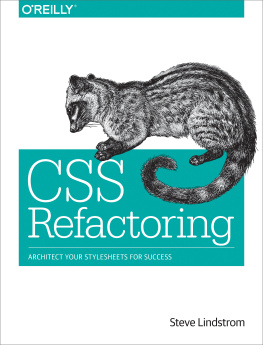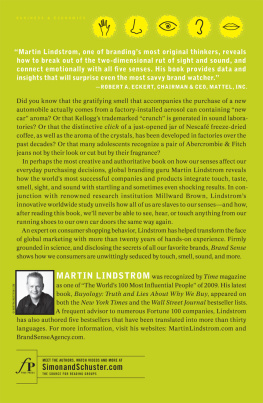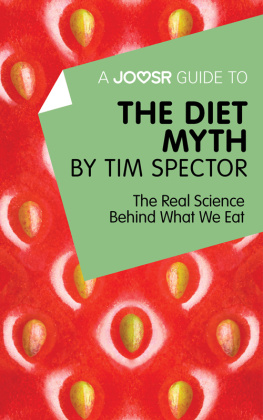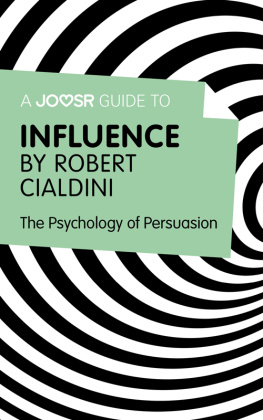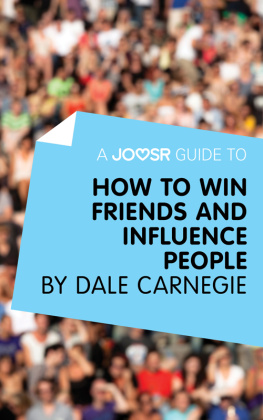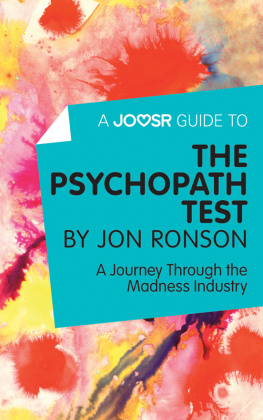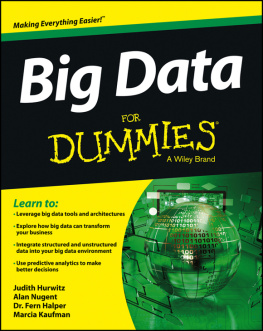Small Data
The Tiny Clues That Uncover Huge Trends
Martin Lindstrom
St. Martins Press
New York

Thank you for buying this St. Martins Press ebook.
To receive special offers, bonus content, and info on new releases and other great reads, sign up for our newsletters.

Or visit us online at us.macmillan.com/newslettersignup
For email updates on the author, click here.
The author and publisher have provided this e-book to you for your personal use only. You may not make this e-book publicly available in any way. Copyright infringement is against the law. If you believe the copy of this e-book you are reading infringes on the authors copyright, please notify the publisher at: us.macmillanusa.com/piracy .
Chip Heath
Co-author of Made to Stick and Switch
In todays business environment, Big Data inspires religious levels of devotion and Martin Lindstrom is an atheist.
While many skeptics are bores, Martin is definitively not. Reading his book is like sitting down to dinner with one of those famous explorers of the nineteenth century, Sir Richard Francis Burton perhaps, who has returned from exotic journeys full of striking observations and tall tales. There is a wide, uncatalogued social world out there, and Martin notices everything... Russian homes have no mirrors, owners of Roomba robotic vacuum cleaners frequently give them names, American hotel windows never open, cultures as diverse as those in Saudi Arabia and Siberia turn to refrigerator magnets to convey important family values.
Martin is anything but a passive observer. When he arrives at the airport in a new country, he hand-picks a taxicab driven by a nonnative to drive him into town, and spends the trip grilling the driver for observations about the locals. He notes that outsiders often see a cultures idiosyncrasies better than the natives. As an outsider, he visits real people in their homes and watches what they are doing and how they shape their spaces.
Martin did not sit down to write an explicit critique of Big Data. But by showing the virtues of Small Data he throws into stark relief some problems you should be aware of when you consider Big Data. Consider two:
Big Data doesnt spark insight. New ideas typically come from juxtapositioncombining two things that previously havent been combined. But Big Data typically lives in databases that are defined too narrowly to create insight. When a firm explores Big Data from its online customers, it typically looks only at online purchases. Frequently that database doesnt track purchases customers make at brick and mortar stores (those are in a separate database, jealously guarded by its owners), and neither database is linked to information on the timing of the firms advertisements. The book describes a breakthrough shopping experience Martin developed for a French retailer that was trying to attract the fickle attention of teenaged girls; Martins solution arose by triangulating across time diaries, phone records, interviews, personal photo diaries, and mall shopping observations. When psychologist Phil Tetlock studied Superforecasters, people who were far superior in predicting political and economic events, he found that they had a similar tendency to explore across data sources, looking for triangulation. Unfortunately our Big Data databases are not really Big, they are less like robust cross-trained athletes and more like gawky nerds who have one splinter skill and are mostly ineffective at everything else. They are too narrow to create the juxtaposition that leads to breakthroughs.
Big Data is data, and data favors analysis over emotion. Its hard to imagine data capturing many of the emotional qualities we most value: beautiful or friendly or sexy or awesome or cute. If data fostered better emotional decisions, then accountants, not poets, would be the cultural prototype for great lovers. Kevin Roberts of Saatchi and Saatchi argued that great brands have two advantages: (1) they evoke respect for their technological performance, durability, and effectiveness; and (2) they evoke love because, well,... we love them. Brands like HP and Duracell are respect brands and Big Data can often help make decisions about increasing respect (Given our history are customers likely to spend 20% more if we make our batteries last 15% longer?), but brands such as Disney, Cheerios, and Geek Squad are respected and loved, and Big Data is pretty incompetent at suggesting how to increase the love.
At one point Martin is asked by the makers of the robotic vacuum cleaner, the Roomba, to help overcome a drop in revenues. Martin focused on Small Data about emotion. He followed Roomba owners into their homes and watched how they interacted with their machines. Surprisingly, owners treated their Roombas like a pet; they named it, they took pride in showing it to their guests (when is the last time you showed off your vacuum cleaner?). When owners stored the Roomba, they didnt stick it in a closet, they left it peeking out from under the sofa, as though it were frozen in mid-action.
Unfortunately, Roombas leaders had moved away from its initial cute factor. Roomba was inspired by R2D2 in Star Wars, but over time designs changed, making Roomba look less like R2D2 and more like an appliance. In the first model, the Roomba made sounds; when it accidentally bumped the wall, by accident it said uh-oh, but at some point the noises were cut by some engineer seeking a simpler design or a manager seeking lower costs. See chapter 7 for Martins clever advice to the Roomba managers, inspired by the worlds cutest automobile, the BMW Mini Cooper, on how to return emotional excitement to their brand.
In sum, Big Data has problems, and Martin is successful at showing how Small Data is essential to overcoming them.
Ive talked about the many virtues of the book, so let me also list a couple of cautions. The book should not be read as a work of social science. When Martin quotes statistics, I dont always know when he is serious and when hes pulling my leg (are 60 percent of the toothbrushes sold in the world really red? Do teenage girls in France really spend 80 percent of their waking hours mulling their outfits for today and tomorrow?). And while Martin is clearly a careful observer, he often extrapolates to grand conclusions that I suspect are bogus (Do Americans have a conflict-aversion that causes us to prefer round cakes to square ones? And does breaking the cake rules by providing a square cake really allow consumers permission to break their diets?). Leaping this far beyond the data would get a masters student in Anthropology a failing grade.
But Martin is an explorer and raconteur, not a social scientist, so as a reader I am willing to forgive his excesses. And thats easier to do because he so frequently manages to provoke his clients in new directions that are clearly better, as in the Roomba case above.
Heres another of my favorite cases: In the 1990s LEGOs sales were declining and executives were scared by big research studies showing that Digital Natives were increasingly distractible and in search of instant gratification. Swayed by this data, LEGO was considering dumbing down its toys, making the kits simpler and even perhaps increasing the size of its iconic brick. But then Small Data convinced LEGO to do an abrupt pivot, going the other direction completely, after senior leaders visited the homes of their young users and talked to them about hobbies and leisure. In the introduction to this book, you will read about how the critical datapoint was an old pair of Adidas worn by an 11-year-old German skateboarder. LEGO leaders eventually embraced the aspirational desires of the geeks who wanted kits that were worthy of their talents, and designed larger kits with more complex features.
Next page

